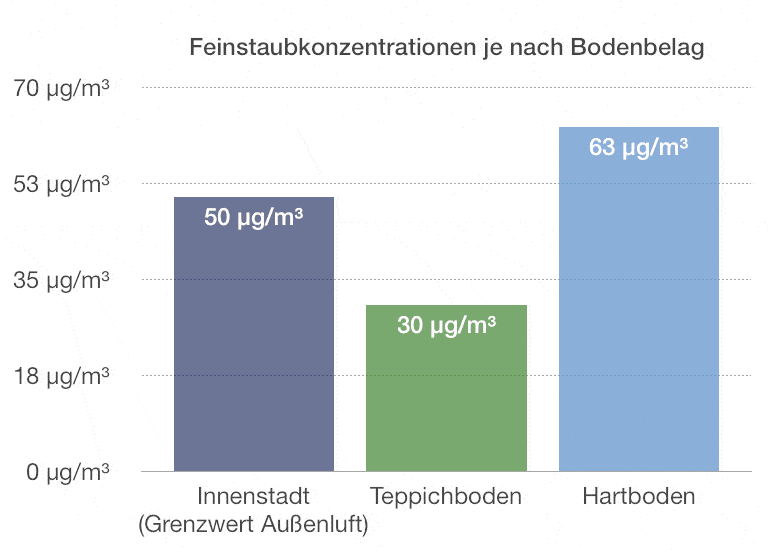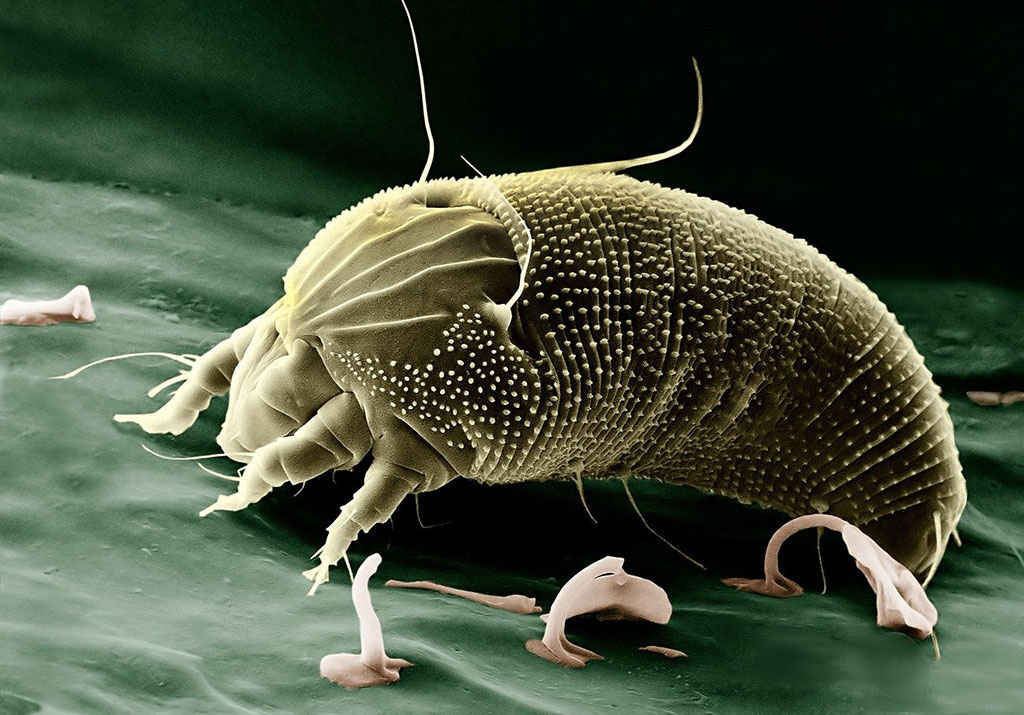Fine Dust indoors
For those allergy sufferers, particulates and endotoxins in the air are not only a nuisance as they can trigger asthma attacks, but can also cause other diseases. Studies prove that the use of textile flooring can reduce the amount of fine dust particles in the air and therefore significantly reduce the risk of breathing related health issues.
Feinstaub in der Raumluft
Durch die Verwendung eines Teppichbodens wird das Risiko einer erhöhten Feinstaubbelastung in Innenräumen, im Gegensatz zu einem glatten Boden, deutlich gemindert. Glatte und harte Oberflächen, wie Parkett, Laminat oder Fliesen, weisen keine Staubbindekapazität auf, sodass der Staub durch die Raumluft wirbelt. Teppichböden können dies verhindern, indem der Staub in der textilen Oberfläche, dem sogenannten Flor, gebunden wird. Auf diese Weise gelangt der Staub nicht in die Raumluft und kann dadurch nicht eingeatmet werden. Die Feinstaubkonzentration eines Innenraums mit Hartboden ist doppelt so hoch wie die in einem Innenraum, der mit Teppichboden ausgelegt ist.
Fine dust in Indoor Air
The use of a carpet significantly reduces the risk of fine dust pollution indoors. Unlike smooth flooring such as parquet, laminate, wood or ceramic tiles which have no dust-binding capacity and the dust is whirled through the air, carpets prevent this by trapping the dust in the surface pile. Therefore, the dust cannot get into the indoor air and consequently cannot be inhaled. Generally, the concentration of fine dust in an interior with hard flooring is twice as high as in an interior with a carpeted floor.

The fine dust concentration in an interior with hard flooring is twice as high as in an interior with carpet

Facts about house dust mites
Carpet is a far from ideal habitat for dust mites as they need food, moisture and warmth to survive. Therefore, they are far more likely to be found in beds and upholstered furniture which provide the right levels of humidity, warmth and low light levels for populations to thrive. In fact, the occurrence of house dust mite allergens in mattresses is 1.5x higher than the number in the dust in bedroom carpets.
The house dust mite itself is not the problem for asthma sufferers, instead it is the allergen which is in their faecal matter which is inhaled with the air which causes asthma. As heat and moisture do not occur in carpet, dust mites are unable to survive as they cannot reproduce in this environment. However, as dust mites and allergens can travel in the air, good ventilation which controls humidity, in critical areas such as bedrooms, ensures that the dust mite population is kept in check. Regular vacuuming of the carpet also removes any remaining allergen particles.
Dust mites are almost never found in offices
Dust mites are almost never found in offices, and in a study comparing carpets from twenty seven randomly selected offices with 30 bedroom carpets, the level of house dust mite allergen was found to be 0.32 μg/g compared to 18.4 μg/g in the bedrooms. Therefore the conclusion is that working in a carpeted office does not pose an increased risk to allergy sufferers.